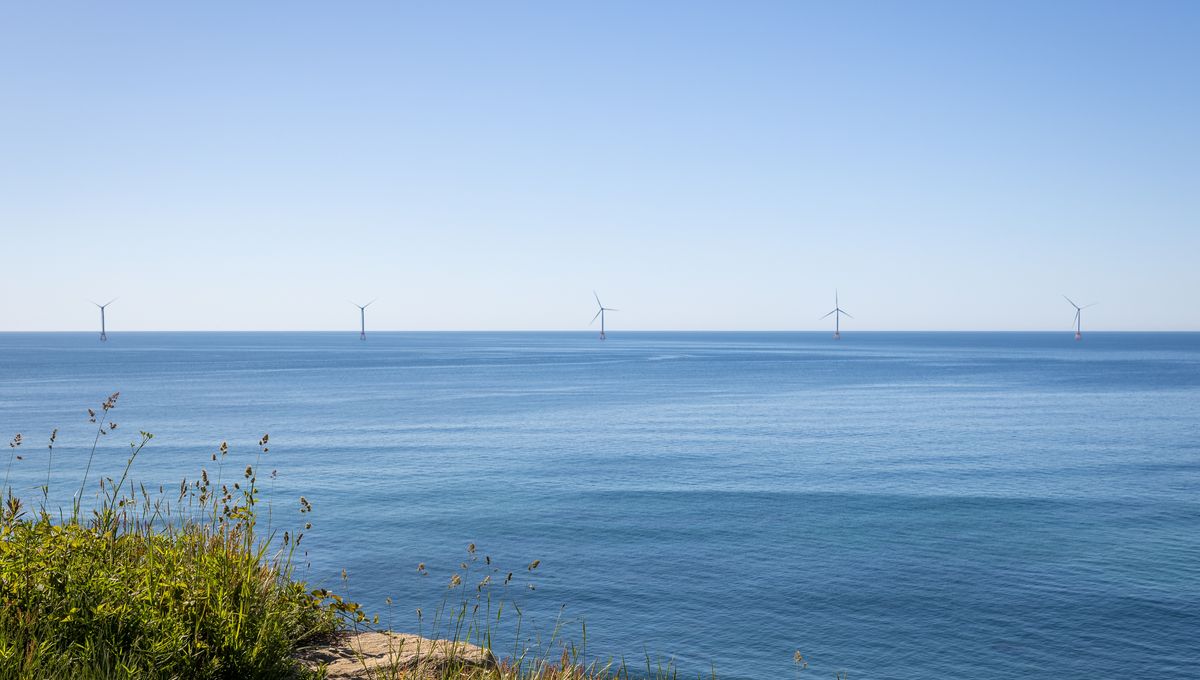
Energy storage company BaroMar is preparing to test a new kind of grid-level energy storage that relies on water to function. If it works, it will be a cheaper way to stabilize renewable energy over longer periods of time.
The world is gradually moving towards zero-carbon energy options, but the road ahead is not a straightforward one. To achieve net-zero emissions by 2050, around 80 percent of the world’s electricity will have to come from options like solar and wind power.
For some, the prospect of moving towards zero-carbon grids may seem impossible – but some countries, like Portugal, Denmark, and Namibia are already doing so. However, to be applicable to everyone, new ways of storing and releasing energy produced from these new technologies will need to be improved to keep up with demand. These demands will vary depending on location – some may need almost constant supply, even on overcast days, while others may experience peaks and troughs throughout the day.
At the same time, energy will need to be stored for (forgive the pun) the rainy days of winter or other seasonal low points where wind power may not make up for the loss of solar power.
This is where BaroMar’s new compressed air energy storage (CAES) alternative may come in handy.
The technology for CAES has been around for about 40 years and is known to be quite a good cost-effective way to store energy and to ensure that the grid remains stable. Traditionally, the process involves compressing and storing ambient air under pressure in underground reservoirs, like caves or old salt mines. When energy is needed, it can be released using turbines that drive a generator to recover it.
BaroMar believes their alternative approach can outperform this older method and store energy for long-durations using low-tech equipment.
The answer is water. The company plans to set up plants near coastlines with access to deep water, the pressure from which will replace the high-pressure tanks used in traditional CAES. This approach is much cheaper.
So rather than imagining slick sophisticated tanks of pressurized air, imagine large concrete and steel tanks weighed down by cages filled with rocks. These would be submerged at around 200-700 meters (650-2,300 feet).
Each tank has water-permeable valves that fill them with seawater, at least to start with. Then, when energy needs to be stored, the nearby compressor and generator (which is on land) feed air down into the tanks through a hose at around 20-70 bar (290-1,015 psi), depending on the depth. As the air enters the tanks, it forces water out.
Then, when energy needs to be extracted, the air is allowed to return up the hose where it powers a thermal recovery system and then a turbo expander, driving a generator.
Back at the sea floor, the tanks fill back up with water and await further use.
This system, especially the tanks, is said to be significantly cheaper to produce because the pressure from the seawater acts as a stabilizer.
“The tanks are designed to resist loads imposed by the marine environment as well as the compressed air and hydrostatic water pressure, during both installation and operational conditions,” a spokesperson for Jacobs, who has teamed up with BaroMar, explained to CleanTechnica.
Jacobs is preparing a pilot project for the new system to be installed in Cyprus with the target of reaching a round-trip efficiency – the combined loss of energy added to and withdrawn from an energy store – of around 70 percent. If achieved, this would be around the same efficiency as the world’s largest traditional CAES station in China.
However, this water-based pilot project will not be able to achieve the level of energy stored at the Chinese plants. It will initially store around 4 MWh (compared to the 100-MW, 400 MW/h capacity in Zhangjiakou, China).
Despite its promises, there will be challenges ahead. These relate to anything designed to exist underwater for decades, which require extensive feasibility studies, geophysical research, and geotechnological and bathymetric surveying to make sure the tanks can be built and can operate at great depths.
Still, if BaroMar’s claims are correct, this new system would be extremely appealing to many cities across the world and could represent a far cheaper and easily scalable solution. Let’s see how they get on.
Source Link: New Seabed Batteries Could Provide Cheaper Energy Storage